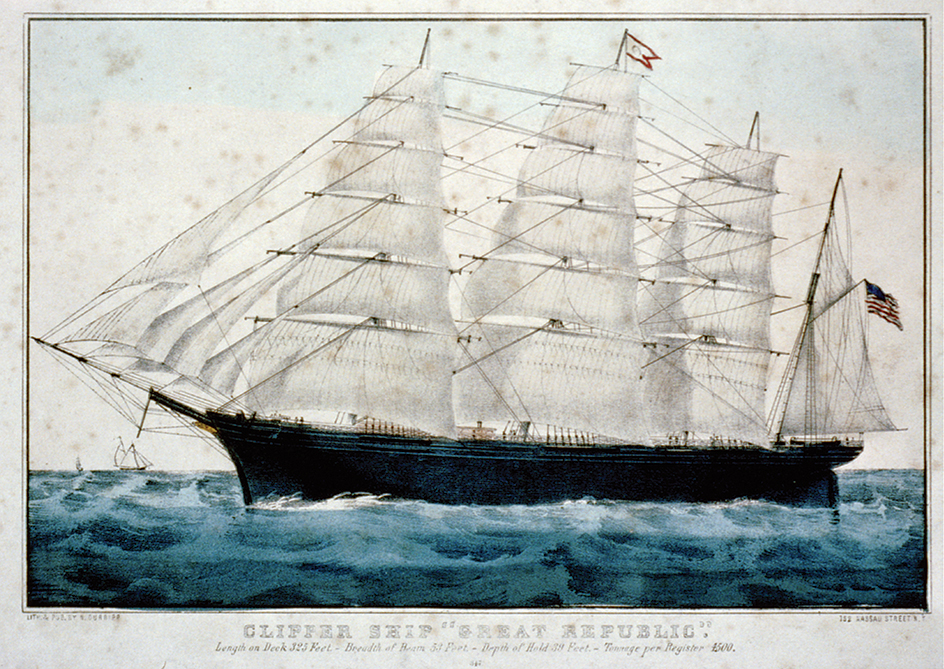Clipper ship was a fast, slender sailing vessel that was developed in the United States in the mid-1800’s. A clipper ship had a sharply angled bow (front). Its hull (body) was deeper in back than at the front. A clipper ship had many large square sails mounted on three tall masts (sail poles). Clipper ships could sail swiftly over long ocean voyages. The ships were modeled after the “Baltimore clippers,” small, fast sailing ships that were developed on Chesapeake Bay for sea use. Baltimore clippers were technically schooners, however, not clipper ships, because they had different types of sails.
The name clipper came from the way the ships “clipped off” the miles. Traders used clipper ships to bring tea and opium from China, and wool and gold from Australia. Clipper ships carried passengers across the Atlantic Ocean, and around Cape Horn to California during the Gold Rush of 1849-1857. Their crews could number up to 100 men.
The Anna McKim, a scaled-up Baltimore clipper with square sails built by the company Kennard & Williamson in 1833, is considered a prototype clipper. The Rainbow, designed by the American naval architect John W. Griffiths and launched in 1845, is often considered the first “extreme” clipper ship, designed to maximize speed. Other famous clipper ships included the Sea Witch and the Cutty Sark. Perhaps the most famous builder of clipper ships was Donald McKay, a Canadian. McKay did most of his work in East Boston. His ships included the Flying Cloud, Stag Hound, Lightning, Sovereign of the Seas, and Great Republic, the largest clipper ship ever built. In 1853, McKay’s Flying Cloud set a sailing record from New York to San Francisco of 89 days, 8 hours. The record was not beaten until 1989 by a racing yacht specially built for the attempt.

Some typical, fast clipper trips included a voyage across the Atlantic Ocean in 12 days 6 hours by the James Baines and a run of 465 nautical miles (862 kilometers) in 24 hours by the Champion of the Seas in 1854. More than 25 years passed before a steamship beat the Champion of the Seas’ record. The American Civil War (1861–1865) drove the costs for ship insurance to unprofitable levels, and many American clippers were retired or sold. The opening of the Suez Canal between the Mediterranean and Red seas in 1869 did away with the need for clippers for the tea trade. Many clippers began carrying wool from Australia, but in this trade, speed was not essential. Thus, in the late 1800’s, huge wooden sailing vessels were designed to carry larger cargoes at slower speeds. These vessels gradually replaced the clipper ships—and were themselves soon replaced by oceangoing steamships.
